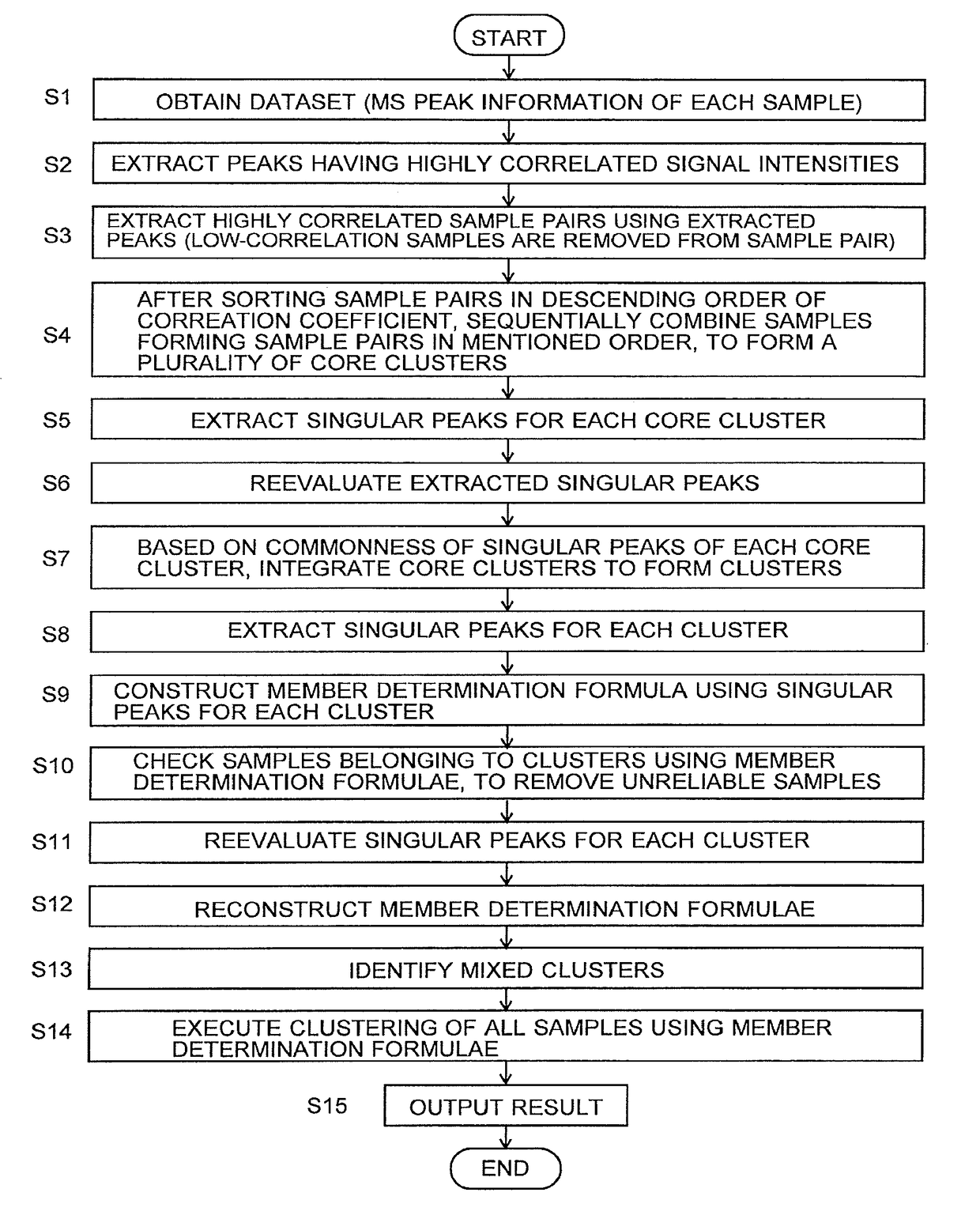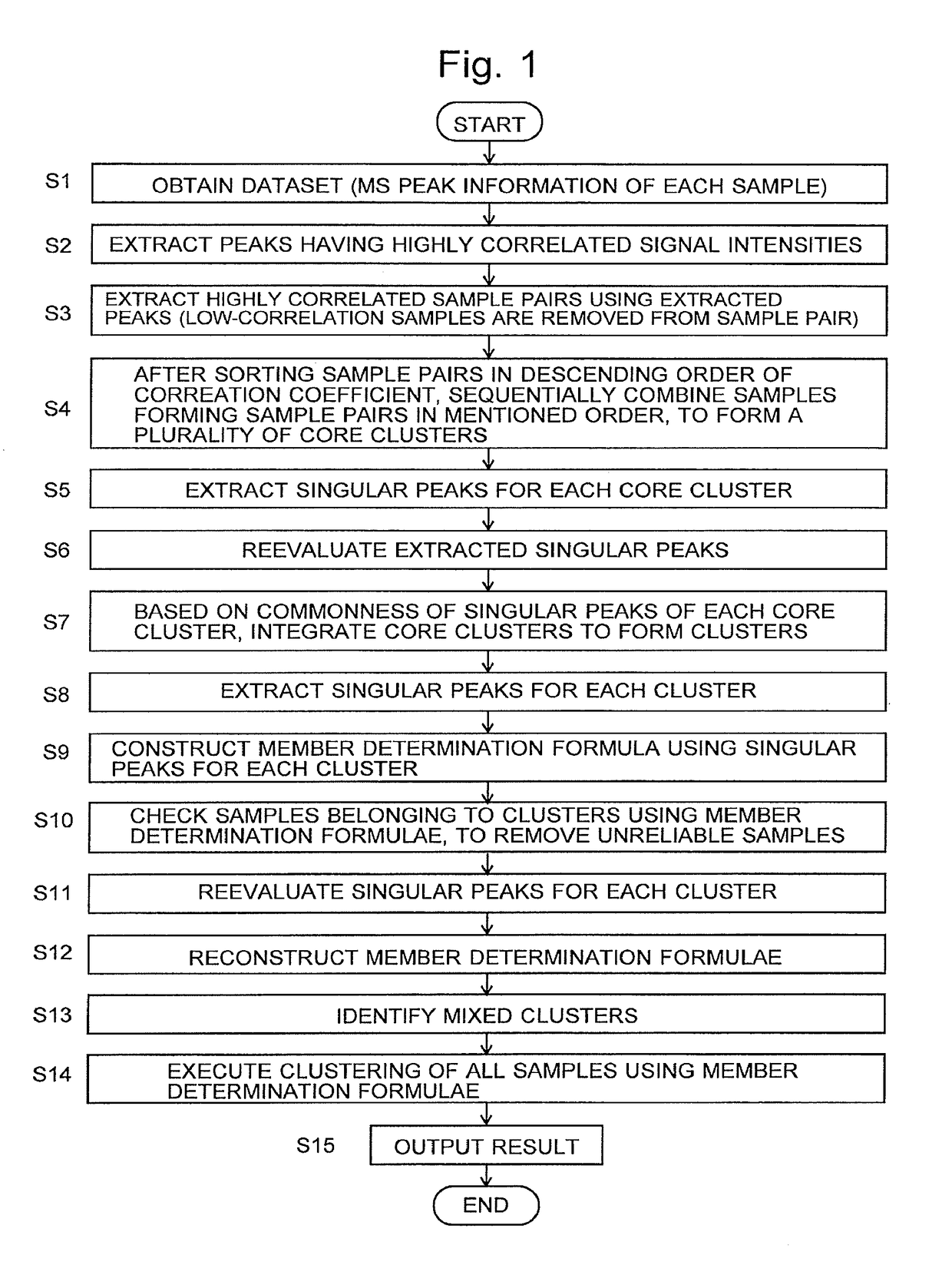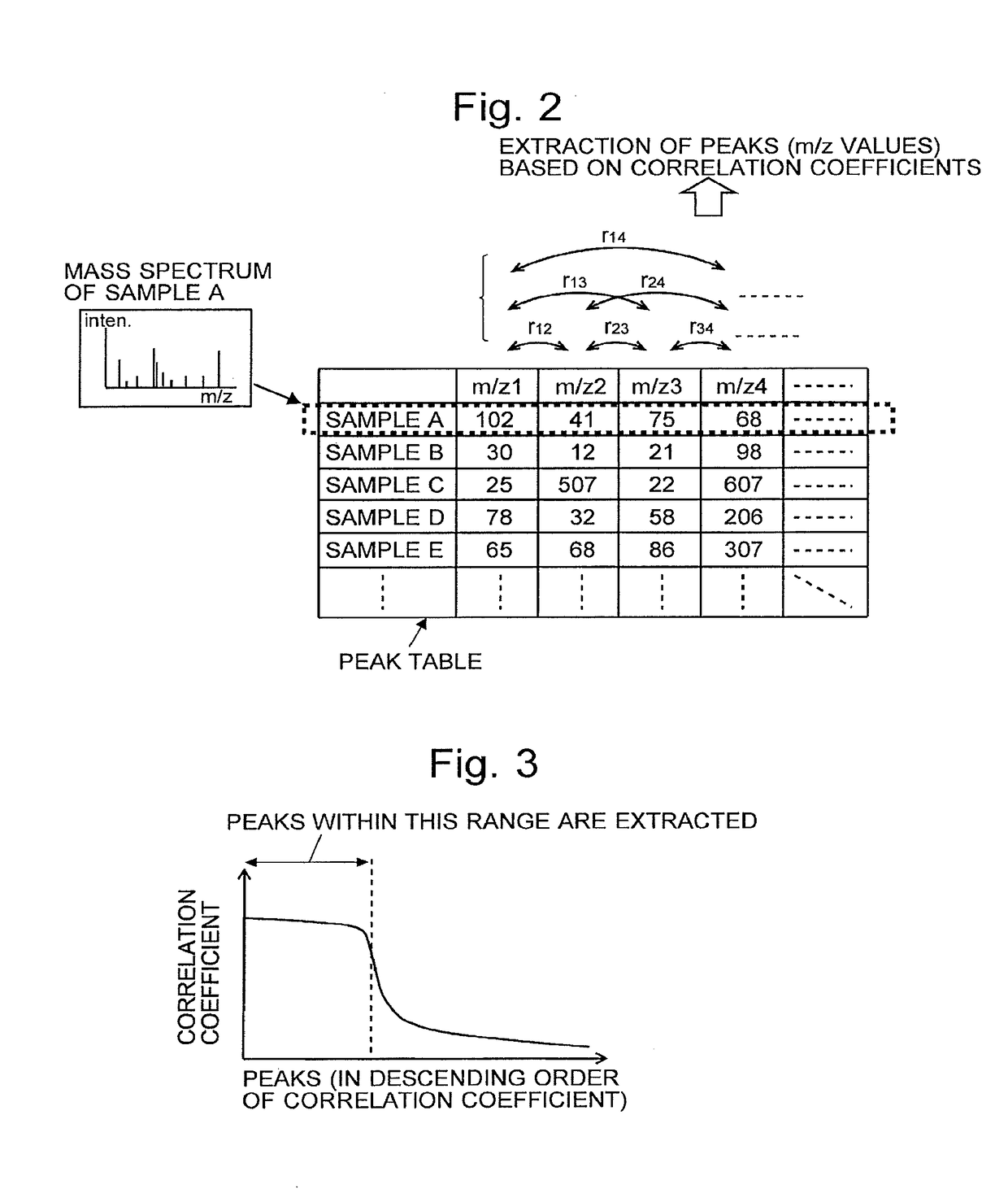Big-data analyzing method and mass spectrometric system using the same method
a mass spectrometry and big-data technology, applied in the field of big-data analysis methods, can solve the problems of inability to determine whether or not a sample belongs to a plurality of clusters or to another cluster different from those clusters, inability to use conventional analysis techniques to determine the very fact that this sample belongs to a plurality of subtypes, and inability to extract highly reliable markers. , the effect of high reliability
- Summary
- Abstract
- Description
- Claims
- Application Information
AI Technical Summary
Benefits of technology
Problems solved by technology
Method used
Image
Examples
Embodiment Construction
[0104][Description of Data Analyzing Method (CCD Method)]
[0105]Initially, a big-data analyzing method as one embodiment of the present invention is described with reference to the attached drawings. FIG. 1 is a flowchart showing the analyzing procedure in the big-data analyzing method of the present embodiment. In the following descriptions, the big-data analyzing method of the present embodiment will be called the CCD (core cluster detection) method. The reason for using such a name will naturally be clarified with the following descriptions.
[0106]Hereinafter considered is the case where biological samples (e.g. cancerous tissues) taken from a large number of cancer patients and healthy individuals are treated as samples, and the big-data analyzing method of the present embodiment, i.e. the CCD method, is used in order to classify the cancer into subtypes as well as determine which subtype each sample belongs to, based on mass spectrum information obtained by a mass spectrometric a...
PUM
 Login to View More
Login to View More Abstract
Description
Claims
Application Information
 Login to View More
Login to View More - R&D
- Intellectual Property
- Life Sciences
- Materials
- Tech Scout
- Unparalleled Data Quality
- Higher Quality Content
- 60% Fewer Hallucinations
Browse by: Latest US Patents, China's latest patents, Technical Efficacy Thesaurus, Application Domain, Technology Topic, Popular Technical Reports.
© 2025 PatSnap. All rights reserved.Legal|Privacy policy|Modern Slavery Act Transparency Statement|Sitemap|About US| Contact US: help@patsnap.com



